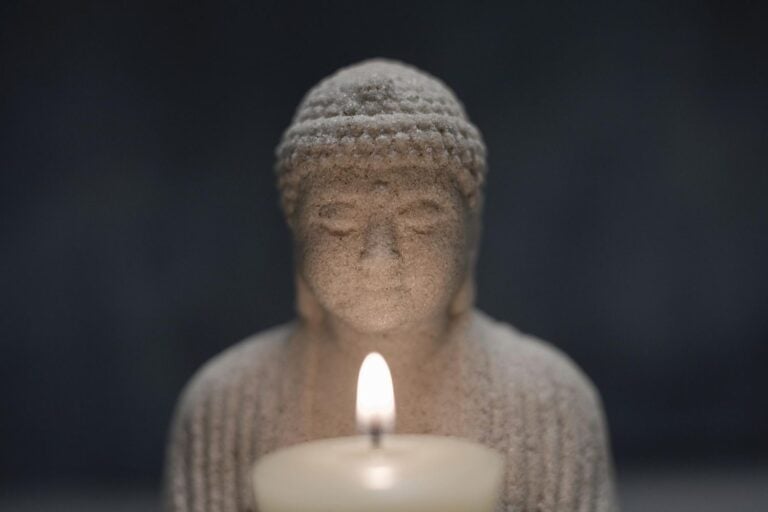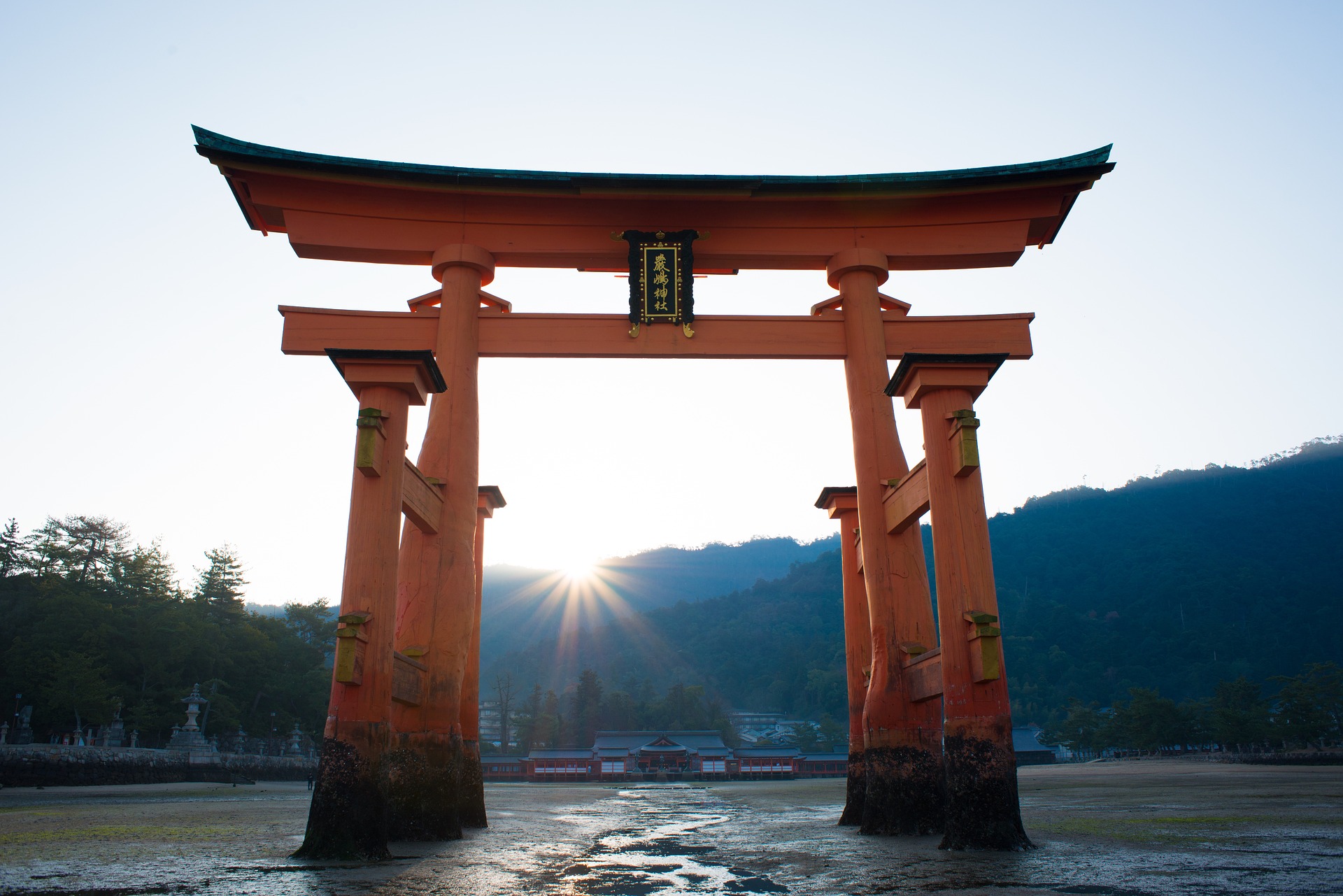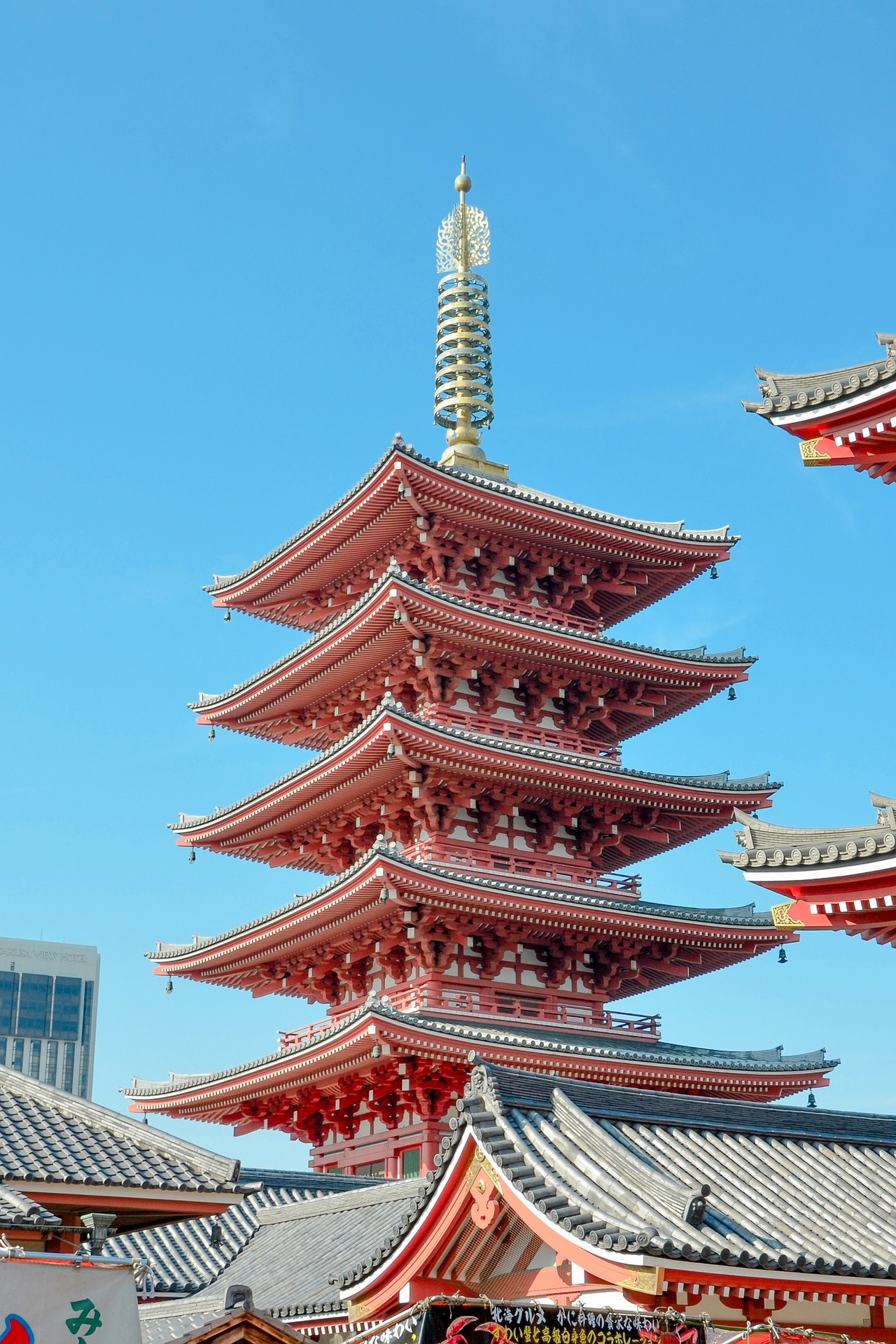
Religion is undeniably a huge influence on many cultures around the world. Even if the modern world has shifting ideas surrounding the topic, historically religion has played a huge part in forming customs.
So, if you’re thinking about moving to Japan, I expect you’re wondering about the religions here! I’m going to give you a rundown of the general religions Japanese people follow, and the influences they have on life here.
Note: Take everything in this article with a grain of salt. There are exceptions to every rule and nothing is supposed to cause offence in this article.

Shinto & Buddhism
The 2 biggest religions in Japan are Shinto (the earliest religion in Japan), and Buddhism.
Shinto, the indigenous religion of Japan, holds a significant place in the cultural and spiritual identity of the country. Rooted in the ancient traditions and customs of the Japanese people, Shinto revolves around a deep reverence for 神 (kami), which can be understood as sacred spirits or deities. These 神 kami are believed to exist in various natural elements like mountains, rivers, or trees. The core belief of Shinto centers on maintaining harmony with these kami and nature, as well as fostering a sense of gratitude and respect towards them.
Rituals and ceremonies play a crucial role in Shinto practices, with shrines acting as centers of worship. These shrines serve as places of prayer, purification, and celebration of life’s milestones and festivals. Shinto’s emphasis on purity, community, and connection with the divine has had a profound influence on Japanese culture, influencing art, architecture, and festivals throughout the nation’s history.
Buddhism, introduced to Japan in the 6th century, has played a pivotal role in shaping the spiritual landscape of the country. It coexists harmoniously with Shintoism and has become an integral part of Japanese culture. The general beliefs of Buddhism in Japan are rooted in the teachings of Buddha. One of the central principles is the Four Noble Truths, which acknowledge the existence of suffering (dukkha) in life and propose a path to liberation from it. This path, known as the Eightfold Path, emphasizes ethical conduct, mental discipline, and wisdom.
Japanese Buddhism encompasses various schools, with Zen Buddhism being particularly influential. Zen emphasizes meditation (座禅 zazen) to attain enlightenment and direct insight into the true nature of reality. Buddhist temples, which can be found throughout Japan, serve as places of meditation, worship, and contemplation. Many Japanese also engage in traditional ceremonies like funerals and memorial services, influenced by Buddhist beliefs about life, death, and the afterlife.

Flexibility
I grew up in the UK, where I feel that people are generally opinionated about religion. In my opinion people have a strong view of whether they believe in an organized religion or not. Here in Japan, I don’t get the same feeling at all. Most Japanese people I ask don’t know what religion they ‘belong to’, rather seeing performing religious events as a tradition rather than true belief.
The fusion of Shintoism and Buddhism, known as 神仏習合 (Shinbutsu-shūgō), further illustrates the syncretic nature of religious practices in Japan, where elements of both faiths often intertwine to create a unique spiritual experience.
In Japan, religious practices often blend elements of Shintoism and Buddhism, reflecting the syncretic nature of the two faiths. Shinto rituals are typically performed for events related to life and nature, such as 七五三Shichi-Go-San, a ceremony celebrating the growth of children at the ages of three, five, and seven, and 初詣 (Hatsumōde), the first shrine visit of the New Year to seek blessings for the upcoming year. Shinto also plays a prominent role in weddings, where couples may receive blessings at a shrine.
On the other hand, Buddhist customs are commonly associated with events related to death and the afterlife. Funeral ceremonies and memorial services, known as お葬式 (osōshiki), are predominantly conducted in the Buddhist way, as Buddhism provides teachings and rituals aimed at helping the deceased transition to the next life. Additionally, the annual お盆 Obon festival, dedicated to honouring and appeasing ancestral spirits, involves Buddhist practices and is observed by many Japanese as a time of remembrance and gratitude for their ancestors. This harmonious integration of Shinto and Buddhist traditions showcases the profound influence both religions have on the cultural fabric of Japan.
It’s also worth noting that some things are now done in a more Christian manner. For example, wedding ceremonies are often conducted in a Chapel in a hotel or somewhere similar. It kind of feels like Japan just nabbed pretty imagery from Christianity and made it their own.

Nagasaki and Christianity
Due to its early contact with Western missionaries in the 16th century, Nagasaki became a center of Christianity in Japan. After the ban in 1614, many Christians in the region continued to practice in secret, disguising their beliefs through syncretism with Buddhism and Shintoism. To this day, Nagasaki holds a unique position in Japan as a city with a strong Christian heritage, evident in various cultural elements, festivals, and even the presence of churches and religious sites. The Oura Cathedral, for example, stands as a symbol of resilience and hidden faith during the dark period of persecution. In 1865, after Japan ended its isolationist policy, Christian missionaries returned to Nagasaki, and the city’s religious diversity has grown since then, with Christianity being practiced openly and contributing to the cultural fabric of the area. The history of Christianity in Nagasaki is a testament to the resilience of religious beliefs and their impact on the shaping of Japan’s rich cultural identity.
Things to Note to Not Make Blunder
I’ll never forget one New Year in Nagasaki with my friends. We were walking around Temple Street (寺町 teramachi) to welcome in the New Year in a very un-British fashion (not smashed off my face). We were ringing the bell (除夜の鐘 joya-no-kane) and having a grand old time. We ended up at one temple and all lined up politely. I was second in line of 6 people and followed what the first person did; the customary bow twice, clap twice, bow once. When I walked away from the offering box a priest told me in perfect English, “This isn’t a Shinto shrine, that’s what you do in a Shinto shrine, please tell your friends not to do that.” But it was too late, in my shock and embarrassment I froze and watched 4 people do the same mistake over and over. I cringed harder than I’d ever cringed in my life. Such a bad showing of foreigners. You might think that we’re ignorant or whatever, but this story is just meant to highlight that because religion here is so fluid, it’s hard to remember what customs belong to what religions at times.
So, don’t make the same mistake, here is some advice for you. Shinto shrines are recognizable by their torii gates at the entrance. When visiting a shrine, follow these customs: Bow once at the torii gate upon entering, cleanse your hands and mouth at the water basin, and make a small offering at the main hall. You can also clap your hands twice and make a wish or prayer.
Buddhist temples, on the other hand, usually have a pagoda or statue of Buddha and are places of meditation and worship. When at a temple, it’s customary to bow upon entering the main hall, offer incense by placing it in the burner, and sometimes spin the prayer wheels if available. Don’t touch sacred objects, walking in restricted areas, or taking photos where it’s prohibited. Additionally, avoid pointing directly at religious statues or icons, as it is considered disrespectful. Following these guidelines will help you show respect and appreciation for the spiritual heritage of Japan during your visit.















